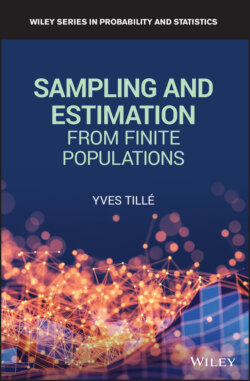Читать книгу Sampling and Estimation from Finite Populations - Yves Tille - Страница 20
1.9 Auxiliary Information
ОглавлениеThe 1990s were marked by the emergence of the concept of auxiliary information. This relatively general notion includes all information external to the survey itself used to increase the accuracy of the results of a survey. This information can be the knowledge of the values of one or more variables on all the units of the population or simply a function of these values. For most surveys, auxiliary information is available. It can be given by a census or simply by the sampling frame. Examples of auxiliary information include the total of a variable on the population, subtotals according to subpopulations, averages, proportions, variances, and values of a variable on all the units of the sampling frame. Therefore, the notion of auxiliary information encompasses all data from censuses or administrative sources.
The main objective is to use all this information to obtain accurate results. As shown in Figure 1.1, the auxiliary information can be used during the conception of the sampling design and at the time of the estimation of the parameters. When auxiliary information is used to construct the sampling design, a design is sought that provides accurate estimators for a given price or is inexpensive for given accuracy criteria. For these reasons, one can use unequal, stratified, balanced, clustered or multi‐stage probability designs. When information is used in the estimation stage, it is used to “calibrate” the results of the census auxiliary information to the survey. The general method of calibration (in French, calage) of Deville & Särndal (1992) allows auxiliary information to be used without explicit references to a model.
Figure 1.1 Auxiliary information can be used before or after data collection to improve estimations.
Any sampling problem deals with how to use the available information. With the idea of auxiliary information, one frees oneself from the modeling of the population. This concept, which will be the main theme of this book, allows us to think of the problem of planning and estimation in an integrated way.
